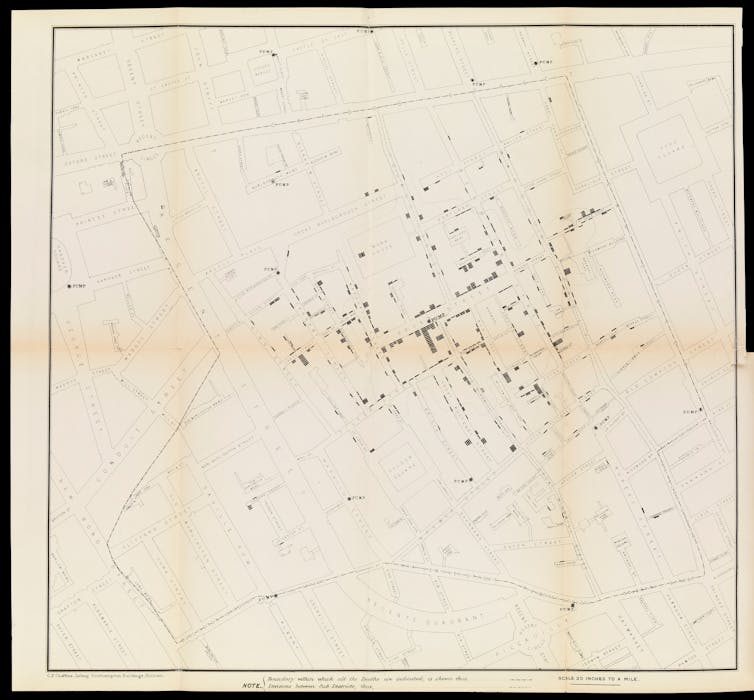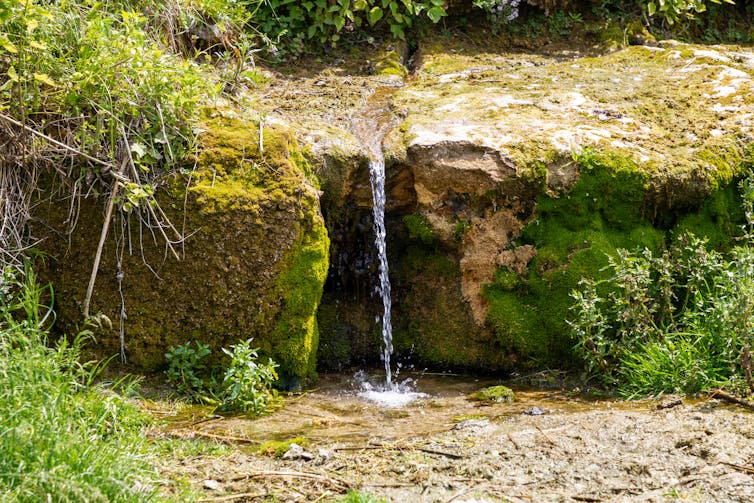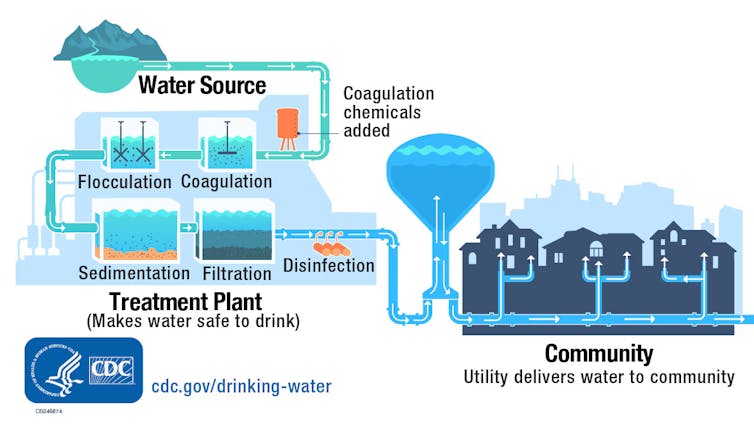Water that comes straight from natural sources, dubbed raw water, isgaining popularity.
But unlike tap or commercially bottled water, raw water is not evaluated for safety.
This leaves the people who drink it vulnerable to infectious microbes or potentially other toxic contaminants.

© arcticphotoworks/Shutterstock
Im amicrobiology researcherstudying infectious diseases.
Two major developments in the mid-1800s showed why impure water is dangerous.
First, physician John Snowtraced a deadly cholera outbreakto contaminated water from Londons Broad Street pump.

Physician John Snow’s 1854 map of cholera cases in London, highlighted in black, clustered around a contaminated pump.
Second,Louis Pasteuradvanced thegerm theory of disease, which postulated that microbes can cause illness.
Pasteur established that consumable liquids like raw water and milk can harbor disease-causing pathogens.
These discoveries paved the way forlarge-scale infrastructure projectsin the 20th century to ensure the public water supply is safe.

The mineral content of water largely depends on its source and location.
Is raw water healthier than tap water?
Lets unpack each of these claims.
Areas with a lot of limestone, like the Midwest, have water that is higher in calcium.

Tap water undergoes several treatment steps before it reaches your faucet.
Experts suggest, however, that most minerals you needcome from your diet, not water.
Some also claim that raw watercontains probioticsthat are removed from tap water.
There are no studies associating raw water with any health benefit.

Anecdotal claims about smoother skin or increased energy are likely to beplacebo effects.
Water-borne viruses includerotavirusandnorovirus, which cause rapid-onset diarrhea and vomiting, andhepatitis A, which infects the liver.
Norovirus is particularly durable and cansurvive on surfaces for days, increasing chances of it infecting someone else.

Raw water can also containalgae that release toxinscausing abdominal issues and damage to the brain and nervous system.
Cholera, dysentery and typhoid fever areno longer health burdens in the U.S.thanks to a robust water treatment system.
But areas of the world lacking this privilege sufferhigh child mortality and widespread diarrheal diseases.

How safe is tap water in the US?
Tap water in the U.S. isamong the safest to drink in the world.
Importantly, raw water is not necessarily free fromlead, arsenic, pesticides or industrial contaminants.

In addition, the water may be acceptably safe one day, but not on another.
For example,soil runoff from a stormcould introduce new germs or pollutants into the area.
The Environmental Protection Agencyroutinely screens for nearly 100 contaminantsto ensure tap water is safe.

In contrast, raw water remains untested, unregulated and untreated, leaving its safety to drink in question.
News from the future, delivered to your present.

















